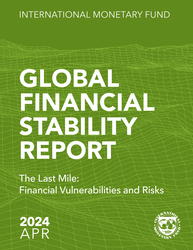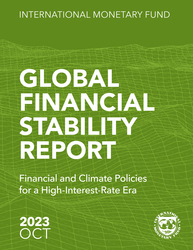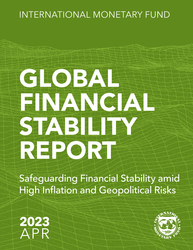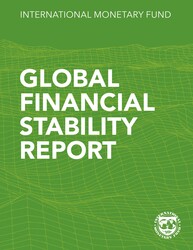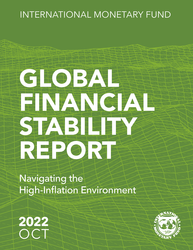
Global Financial Stability Report, October 2022:Navigating the High-Inflation Environment
| English |
Banks and Banking , Finance , Inflation , Economics- Macroeconomics , Environmental Economics , frontier markets , debt distress , bond issuance , term premia , financing costs , portfolio flows , foreign reserves , macro uncertainty , European energy crisis , TPI , Transmission Protection Instrument , central banks , Growth-at-risk , market liquidity , dollar strength , rising interest rates , financial conditions , fragmentation , inflation , China property sector , China spillovers , market structure , corporate defaults , leveraged finance , house prices , stagflation , global bank stress test , monetary policy , emerging markets , developing economies , sustainable finance , green finance , climate finance , transition finance , taxonomies , fossil fuel investments , fossil fuel expansion , ESG scores , ESG funds , blended finance , structured finance , sovereign sustainable bonds , IMF Resilience and Sustainability Trust , carbon markets , Paris Agreement Article 6 , climate information architecture , climate disclosures , climate data , multilateral development banks , climate change mitigation , climate change adaptation , climate ambition gap , transition plans , green bonds , sustainability-linked bonds , financial stability , liquidity mismatch , open-end investment funds , nonbank financial intermediation , asset management , fragility , liquidity , asset prices , asset price fragility , market stress , dash for cash , volatility , COVID-19 market turmoil , bond funds , corporate bonds , emerging markets , spillovers , fire sales , selling pressure , runs on funds , first mover advantage , strategic complementarities , redemptions , herding , monetary policy tightening , monetary policy uncertainty , liquidity management , antidilution levies , swing pricing , swing factors , cash buffers , , developing economy , asset return volatility , ESG score , debt issuance , Emerging and frontier financial markets , Securities markets , Global , Asia and Pacific , Central and Eastern Europe , Middle East , Caribbean
